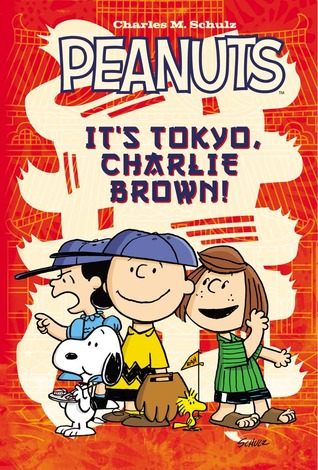
Review: ‘Peanuts: It’s Tokyo, Charlie Brown!’
 Peanuts: It’s Tokyo, Charlie Brown!
Peanuts: It’s Tokyo, Charlie Brown!
Writer: Vicki Scott
Artists: Vicki Scott and Paige Braddock
BOOM! Studios; $14
There’s an interview with cartoonist Vicki Scott presented among the pages of behind-the-scenes material in the back of her original graphic novel, It’s Tokyo, Charlie Brown!, in which she mentions looking to the animated specials for inspiration in how to sucessfully take the Peanuts characters out of their home neighborhood.
Thinking in terms of the animated Peanuts cartoons–many of which had titles using the same “It’s Something-or-Other, Charlie Brown!” formulation–is probably not a bad way for readers to think about new, non-Schulz comics like this one, too.
ADVERTISEMENT
ADVERTISEMENT
After all, while there’s something sacred about Charles Schulz’s comics–particularly among comics aficionados–Schulz himself necessarily took on collaborators for the Peanuts animated outings, and those continue to this day, long after the great cartoonist is able to provide any input beyond the inspiration inherent in his work.
Thinking of it as extrapolations of Schulz’s characters into a new and different medium–even if the graphic novel and comic book medium is so much closer to the newspaper comic strip medium than animation is–can certainly help grown-ups past their queasiness regarding post-Schulz Peanuts. Children, the natural and intended audience for this and other BOOM! Peanuts comics and graphic novels, likely don’t have any such hang-ups, of course.
As with previous books Happiness is a Warm Blanket, Charlie Brown and The Beagle Has Landed, Charlie Brown, this one is built a little like a continuing collection of newspaper strips, with almost every page reading like a three- to six-panel comic strip, reformatted for the vertical rectangle of a trade paperback collection. They all follow a theme, of course, and gradually coalesce into a story that fills the whole book. It’s an unusual, maybe even unique way to build a graphic novel, albeit one wholly appropriate for these characters.
The book opens with a series of baseball sequences, which will eventually lead our cast to the locale in the title. After the end of a typically loss-filled season, Charlie Brown receives a letter from the President of the United States asking him and his team to represent the country in a game against a Japanese team.
Together with a couple of ringers–Peppermint Patty and Marcie–and the little yellow friend of that weird-looking kid who plays shortstop, Charlie Brown’s team heads to Tokyo. In addition to baseball sequences at home and abroad, there is some time spent on the characters prepping for and going on their flight, but the majority of the book is spent on the all-American Peanuts characters exploring the culture of the new setting.
As is always the case with Peanuts, in comic strips or animated cartoons, their world is peculiarly deserted, absent not only parents, but adults of any kind, or even Japanese kids (the opposing team is seen only as silhouettes in the distance in a pair of panels).
ADVERTISEMENT
ADVERTISEMENT
In any other context, a fictional trip to Japan completely devoid of Japanese people would be as distressing as it is weird, but then, that’s part of the constraints put upon the Peanuts characters and narratives. One imagines those constraints are only more constraining when someone other than Schulz is telling the Peanuts stories, too, as he would be free to break his own rules whenever he wanted.
Among the repetition of familiar jokes and familiar characters interacting with a new environment and new set-ups for jokes, Scott provides an elegant bit of back-handed inspiration in the form of a pep talk by Linus.
Noting that Charlie Brown has played and lost hundreds of games, yet continues to play baseball, knowing there’s at least a chance he could win one some day, Linus declares him the most optimistic person he knows.
At the risk of spoiling the ending, which is atypical of most sports narratives, that optimism and winning-through-losing is borne out in the climax of the book: Charlie Brown and his team don’t win, but they don’t exactly lose, either. And when you’re Charlie Brown, not losing is close enough to winning to make all the difference.
Filed under: All Ages, Graphic Novels, Reviews
About J. Caleb Mozzocco
J. Caleb Mozzocco is a way-too-busy freelance writer who has written about comics for online and print venues for a rather long time now. He currently contributes to Comic Book Resources' Robot 6 blog and ComicsAlliance, and maintains his own daily-ish blog at EveryDayIsLikeWednesday.blogspot.com. He lives in northeast Ohio, where he works as a circulation clerk at a public library by day.
ADVERTISEMENT
ADVERTISEMENT
SLJ Blog Network
Name That LEGO Book Cover! (#53)
Cover Reveal and Q&A: The One and Only Googoosh with Azadeh Westergaard
Fighting Public School Book Bans with the Civil Rights Act
ADVERTISEMENT







